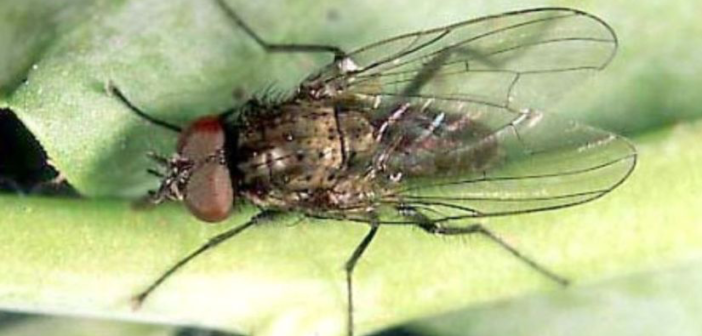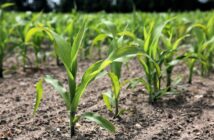The bean seed fly affects around 40 plant host species and is an important pest of peas, maize and Phaseolus beans. It is common in most temperate countries affecting a wide range of large-seeded plants and severe infestations may result in re-drilling and subsequent loss of high value vegetable crops at a very early crop growth stage.
Adult flies are attracted to freshly disturbed soil containing debris from previous crops, high levels of organic matter such as farmyard manure, or weed debris. The presence of imbibing and germinating seeds is also attractive to the flies. These factors can lead to high levels of crop damage and failure of establishment, particularly in vining peas and dwarf French beans sown during late spring and early summer, from late April onwards.
The flies lay eggs on the soil surface and larvae hatch after a few days to feed on newly planted seeds or plant and crop debris. After 10-14 days, larvae pupate and emerge as a second generation of flies which move to suitable feeding sites. There may be several overlapping generations each year occurring from late spring to early autumn.
Larvae feed on newly planted seeds and seedlings, tunnelling into freshly imbibed seeds and the stems of small seedlings. Damage to the seed causes damage to the plumule and root and often to the growing point of the plant. In Phaseolus beans this may result in a ‘baldhead’ symptom, where the stem elongates but no terminal leaves are present. In peas and faba beans secondary shoots may be formed to compensate for the damage to the growing point, but Phaseolus beans cannot do so. Severely damaged seeds of all crops fail to produce a seedling and decay before emergence.
Damage often occurs in patches as the flies aggregate before egg-laying, and late cultivated fields containing high levels of green material, either weed or crop debris, are more prone to infestation.
As late spring and early summer sowings are more at risk from attack, seed-bed preparation in these crops should ensure that weed growth has died back before cultivation and that there is little to no green material in soils. Destruction of weeds and cover crops should take place at least 3 weeks prior to drilling. There is some evidence that damage may be reduced in no-till situations, although this needs to be further tested in the UK.
There are no insecticidal seed treatments to control bean seed fly larvae in peas and beans approved in the UK, and field insecticide applications are of limited value to control the pest.




